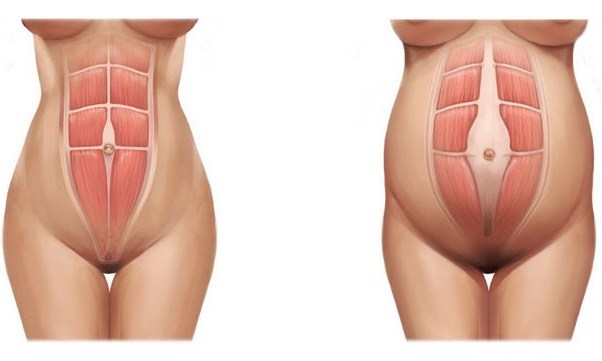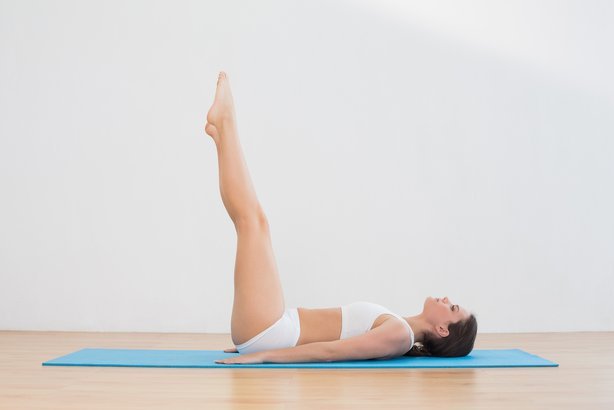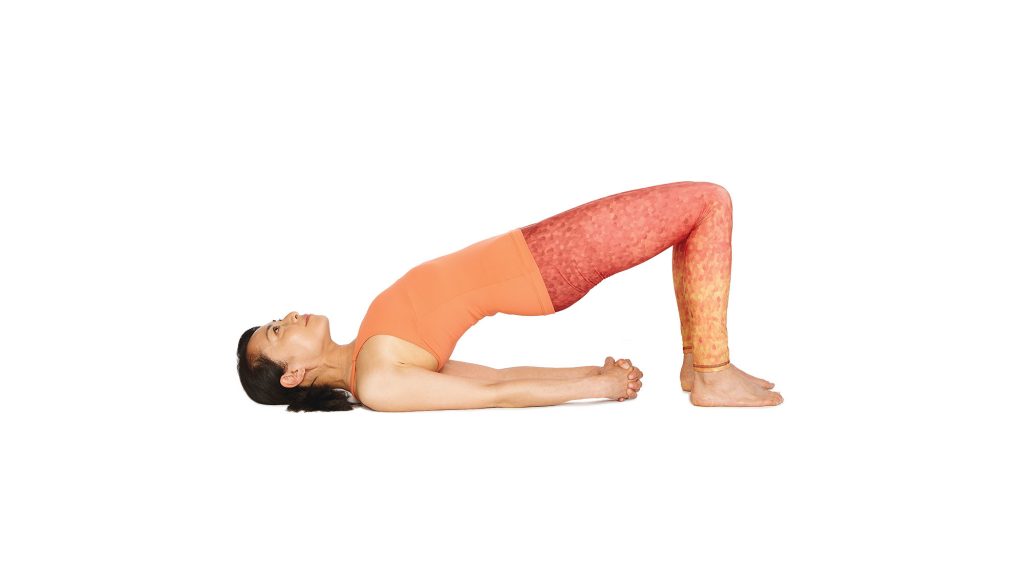Becoming a mother is an empowering experience. However, pregnancy and childbirth may weaken your core muscles. Here’s why you should practice postnatal yoga to strengthen the core.
What happens to the core muscles during pregnancy?
Just like other types of yoga, postnatal yoga consists of meditation, pranayama, and asana. While meditation and pranayama help calm the emotional challenges of motherhood, the postures (or asana) in postnatal yoga help new mothers regain core strength and a healthy range of motion across the joints.
During pregnancy, the rectus abdominis (R.A.) muscles stretch out and separate to accommodate the growing baby. Although these muscles can heal after pregnancy and recover over time, this separation may lead to diastasis recti.
To put it simply, diastasis recti is a gap between your right and left abdominal wall muscles. As a result, your uterus and other internal organs are only supported by a thin band of connective tissue.
Diastasis recti may lead to back pain and urinary incontinence. It can also be further complicated by a Caesarean delivery, as surgery immediately weakens the core muscles.
How do you strengthen the core after pregnancy?
One way to restrengthen the core muscles is to stabilize the deep core muscles first. The rectus abdominis is a superficial layer of the abdominal area, so doing R.A. targeted exercises like crunches will not do much for core strength and healing.
In fact, sit ups and crunches (which flex and add stress on the R.A.) can do a lot worse if you’re recovering from pregnancy or surgery.
Rethink your core program, and work on the pelvic floor muscles and the transverse abdominis. The transverse abdominis is a stabilizer to the pelvis and the spine. It cinches around your waistline, and is essential for keeping the trunk in place across any type of movement.
Working on these deep, stabilizing muscles instead will help you get back on track and on the road to recovery for your core muscles.
That said, many postnatal yoga poses and exercises can help target these muscles. Here are some below.

Postnatal yoga to strengthen the core
Here are some postnatal yoga poses to help strengthen your core. Remember: Before you get into any workout program, please seek clearance from your medical professional.
1. Heel Slides
Lie down on your yoga mat with your knees bent and feet as wide as the hips. Relax the shoulders away from your ears. You can turn the palms down or up, whichever helps you feel more stable.
Maintain a neutral spine. Keep a healthy space between your low back and the mat. If you feel that your low back is unstable, you may also imprint it on to the mat.
When you inhale, stretch the right leg forward and slide the heel of your right foot down the mat. Notice if your left leg moved. Draw the belly in and dig the heel of your left food down to keep your left side stable.
When your exhale, slide the heel of your right foot back in and flatten your right foot back down to the mat. Inhale, stretch the leg and slide the heel. Exhale, draw the leg back in.
Continue performing this with the right leg for six to eight reps. Then, switch sides and perform this exercise with the left leg.
2. Bridge
Your bridge can help strengthen your deep core and glutes. Additionally, it can also help alleviate back pain. Many new mothers experience back pain from carrying their infant, or having a heavier chest from breastfeeding.
Still lying down with your knees bent and feet on the floor, lift your hips up. Push down with the soles of your feet, and squeeze your inner thighs and glutes. Draw the navel in, and lengthen your tailbone forward.
You can hold your bridge pose for a few breaths before lowering down. You can also do a total of six to eight reps.
3. Warrior 2 on Chair
When you’re pregnant, your body releases a hormone called relaxin. This hormone helps create laxity in the joints, specifically in the pelvis. Warrior 2 can help restabilize your hips without compromising range of motion.
Begin seated on a chair. Turn your right foot out to the side and press the right heel down. Your right knee should align with your right ankle. Then, stretch the left leg out and ground the left outer heel onto the mat.
Stretch your arms out wide. Lengthen your spine and firm the triceps in. Broaden the collar bones, and grow taller from the neck. Stay here for a few breaths, before switching to the other side.








